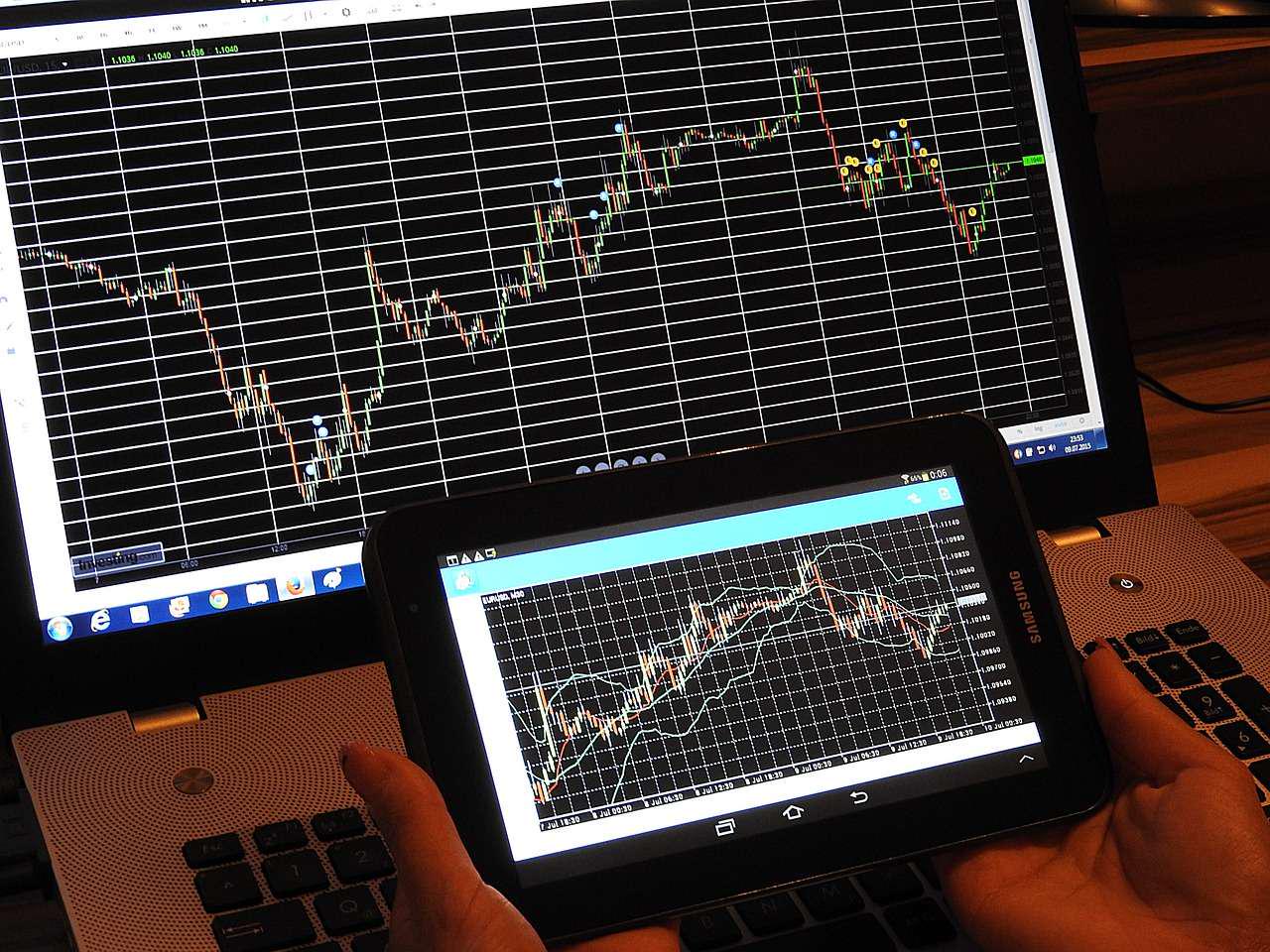Revolutionizing Stocks: Tokenized Market Memory on Blockchain Unveiled

The Rise of Tokenized Stocks: Opportunities and Challenges in Modern Investing
A Historical Perspective on Financial Innovation
In the late 1980s, Nathan Most, a physicist with a background in logistics, found himself immersed in the world of the U.S. stock exchange. Unlike traditional bankers or traders, his expertise lay in system design rather than financial instruments. During this time, mutual funds were a favored investment vehicle, allowing for diversification but lacking real-time trading capabilities. Investors had to wait until the market closed to know the transaction price, which felt outdated to those accustomed to the immediacy of individual stock trading.
Most envisioned a solution: to create a product that would track the S&P 500 while trading like a single stock. His idea was to package the entire index into a new format that could be listed on trading platforms. Initially met with skepticism due to the existing legal framework and perceived lack of demand, he persevered.
In 1993, the S&P Depositary Receipt (SPDR), known by its ticker SPY, was launched. This groundbreaking exchange-traded fund (ETF) represented a collection of hundreds of stocks and quickly became one of the most actively traded securities globally. On many days, SPY outperformed the individual stocks it represented, proving that a synthetic financial instrument could be more liquid than its underlying assets.
The Emergence of Tokenized Shares
Fast forward to today, and the narrative is once again relevant, not due to a new fund, but because of developments in blockchain technology. Investment platforms such as Robinhood, Backed Finance, Dinari, and Republic are now offering tokenized shares—digital assets designed to reflect the prices of private companies like Tesla, Nvidia, and OpenAI.
These tokens are marketed as a means to gain price exposure rather than ownership. Investors do not receive shareholder rights or voting privileges; instead, they acquire a token linked to the asset’s value. This distinction has led to some controversy, with figures like Elon Musk and OpenAI expressing concerns over the tokenized stocks available through Robinhood.
Robinhood’s CEO, Vlad Tenev, clarified that these tokens provide retail investors with exposure to private assets. Unlike traditional stocks issued directly by companies, these tokens are created by third parties. Some claim to back their tokens with real stocks on a 1:1 basis, while others are entirely synthetic. The user experience mimics that of stock trading, but the underlying legal and financial frameworks can be tenuous.
Global Accessibility and Regulatory Hurdles
Despite the appeal of tokenized shares, especially for international investors lacking easy access to U.S. markets, significant challenges remain. For individuals in cities like Lagos, Manila, or Mumbai, investing in companies like Nvidia typically requires navigating overseas brokerage accounts, high minimum balances, and lengthy settlement processes. Tokenized shares aim to eliminate these barriers by facilitating on-chain trading that tracks the underlying stock’s movements. This means no wires, no forms, and no intermediaries—just a digital wallet and a marketplace.
However, many platforms, including Robinhood and Kraken, have limited reach in emerging markets. It remains uncertain whether users in countries like India can legally or practically purchase tokenized shares through these platforms. If the goal of tokenized stocks is to broaden access to global markets, the challenges will extend beyond technology to encompass regulatory, geographical, and infrastructural issues.
Understanding the Mechanics of Tokenized Stocks
Derivatives such as futures contracts have long provided a way to trade based on expectations without directly engaging with the underlying asset. Options allow investors to speculate on volatility, timing, or direction without necessarily purchasing the stock. Tokenized stocks have emerged with similar objectives, aiming to offer an alternative entry point for those historically excluded from public investments.
New financial products often go through a familiar evolution. Initially, confusion reigns as investors struggle to determine pricing, traders remain cautious about risks, and regulators observe from the sidelines. Speculators then enter the fray, testing boundaries and exploiting inefficiencies. If the product proves valuable, mainstream adoption follows, eventually leading to its integration into the financial infrastructure.
This trajectory has been observed with index futures, ETFs, and even Bitcoin derivatives. These instruments were not initially designed for mass participation but rather for speculative trading. Tokenized stocks may follow a similar path, initially attracting retail traders seeking exposure to hard-to-reach assets like OpenAI or pre-IPO companies. As trading volumes increase and infrastructure matures, institutional players may also begin to engage with these products, particularly in regions where regulatory frameworks are established.
The Challenges of Time and Trust
One notable aspect of tokenized stocks is their operation outside traditional market hours. While conventional stock markets have set opening and closing times, tokenized stocks can react to news events immediately, even when the underlying stock remains static. For instance, if a U.S. stock closes at $130 on a Friday and significant news breaks over the weekend, the token may reflect that news right away.
This time difference can become problematic if trading volumes of tokenized stocks surpass those of the underlying stocks. Traditional futures markets address such challenges through funding rates and margin adjustments, while ETFs rely on authorized participants and arbitrage mechanisms to maintain price consistency. Currently, tokenized stocks lack these stabilizing mechanisms, leading to potential price deviations and liquidity issues. The relationship between the token and its reference asset often hinges on trust in the issuer.
However, this trust is not uniform. When Robinhood introduced tokenized shares of OpenAI and SpaceX in the EU, both companies publicly distanced themselves from any involvement or coordination.
The Future of Tokenized Stocks
While tokenized stocks are not inherently problematic, they raise important questions about what investors are actually purchasing. Are they acquiring mere price exposure, or are they engaging with a synthetic derivative that lacks clear rights and recourse?
The underlying infrastructure for these products varies significantly. Some are issued under European regulations, while others depend on smart contracts and offshore custodians. Platforms like Dinari are exploring more compliant pathways, but many are still navigating the complexities of legal frameworks.
In the U.S., securities regulators have yet to provide clear guidance on tokenizing traditional stocks. While the SEC has established a stance on token sales and digital assets, the status of tokenized stocks remains ambiguous. This uncertainty has led platforms like Robinhood to launch their products in the EU rather than the U.S.
Despite these challenges, the demand for tokenized stocks is evident. Companies like Republic are already offering synthetic exposure to private firms such as SpaceX, while Backed Finance is packaging public stocks for issuance on blockchain platforms like Solana. These initiatives are in their infancy but demonstrate a commitment to reducing friction in investment processes.
For retail investors, the ability to participate is often paramount. Tokenized stocks do not compete with traditional stocks; they compete with the effort required to acquire them. If investors can gain exposure to Nvidia with just a few clicks in an app that also holds stablecoins, they may overlook the synthetic nature of the product.
This trend is not new. The SPY ETF illustrated that innovative packaging can create significant market demand. Similarly, derivatives like CFDs, futures, and options began as tools for traders before expanding to a broader audience. These derivatives often lead the underlying assets, reflecting market sentiment more swiftly than traditional stocks.
Tokenized stocks may follow a comparable trajectory. While the infrastructure is still developing, liquidity remains inconsistent, and regulatory clarity is lacking, the underlying motivation is clear: to create an instrument that accurately represents the asset, is accessible, and engages users. If this representation can maintain stability, trading volumes are likely to increase, transforming tokenized stocks from mere shadows into significant market signals.
Nathan Most did not aim to revolutionize the stock market; he simply sought to address inefficiencies and enhance user experience. Today, token issuers are pursuing a similar goal, albeit with smart contracts instead of traditional fund structures. The coming years will reveal whether these new financial instruments can withstand the volatility of the market. For many, especially those distanced from conventional finance, the proximity offered by tokenized stocks may be sufficient.







